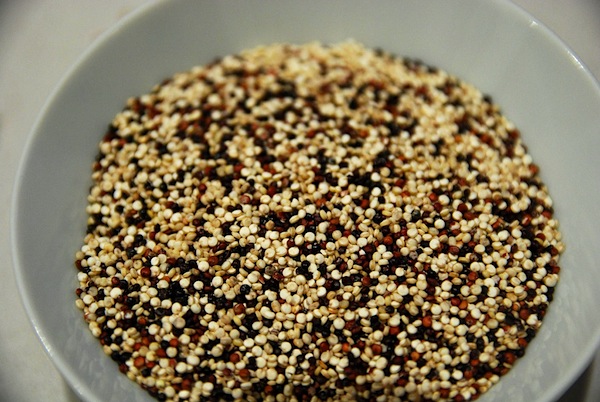What: Quinoa. Think of this tiny grain as a superhero version of rice: It can be used in many of the same ways and has the same cooking ratio (two parts liquid to one part quinoa), but it packs tons of nutrients and has a lot more flavor. Part of the American diet only since the 1980s, quinoa (pronounced KEEN-wah or ken-OH-ah) has been harvested for more than 5,000 years in the Andes mountains in South America. There, says dietitian and culinary nutritionist Colleen Gerg, it was a staple food of the Inca warriors before going into battle. Unlike rice, quinoa isn’t a starch; it’s related to such green vegetables as spinach and Swiss chard.
Look for packaged quinoa in the grocery store near rice and beans or in the bulk aisle. A quick Google search will reveal plenty of online retailers. The grains have a natural bitter coating that keep birds away in the wild, but a simple pre-cooking rinse will remove the unpleasant taste. You can also pan-roast the grains before cooking for an extra-nutty flavor.
Why it’s good for you: Quinoa is a “complete protein,” which means it contains all nine essential amino acids, including a big dose of lysine, important for tissue growth and repair. The New York Times says quinoa has an average of 16.2 percent protein per serving, while rice has 7.5 percent and wheat 14 percent. Gerg also notes that it’s high in dietary fiber (good for weight loss, reducing risk of some cancers and heart disease), magnesium (cardiovascular health, migraine prevention), manganese (helps with a slew of ailments, from asthma to diabetes), and calcium (bone strength).
What the experts say: Gerg says quinoa is a great choice for vegetarians, because it’s high in iron—a nutrient that’s hard to get without meat. It’s also a gluten-free way of incorporating grains into your diet.
How to incorporate quinoa into your diet: “One of the most appealing properties of quinoa is its versatility,” says Gerg. “It can be part of virtually any meal.” For example, she suggests using the red variety, which is firmer in texture, for cold salads, or the white variety for soups or a side dish. It can also take the place of oatmeal in the morning. Cook up a big batch and keep it in the refrigerator for up to a week, or freeze it for later use.
Recipes to try:
• Basic Steamed Quinoa
• Warm and Nutty Cinnamon Quinoa (a good breakfast option)
• Balsamic Quinoa Salad
• Red Quinoa With Roasted Butternut Squash, Cranberries, and Pecans
• Quinoa Risotto With Mushrooms and Thyme
• Quinoa Dessert (just like rice pudding)
Subscribe to Washingtonian More >> Health | Top Doctors | Well+Being Blog
Follow Well+Being on Twitter



















